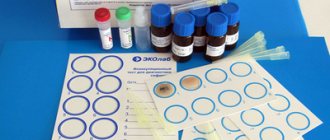Hallucinations are deceptions of perception.
They occur not only in mental illnesses, but can also occur in various diseases, including schizophrenia, vascular, infectious and alcoholic psychoses, consequences of traumatic brain injury, poisoning, psychogenia, atrophic psychoses, etc. In the sense organs that characterize specificity of hallucinations, there is no organic pathology that would be related to their occurrence and influence their character. Auditory hallucinations will not become quieter if the patient covers his ears with his palms. The visual images will not disappear if he closes his eyes.
Patients lack a critical attitude towards them, and they cannot be convinced of their absence.
As a rule, mentally healthy people do not experience hallucinations, but sometimes they can occur when falling asleep (hypnopompic) and waking up (hypnopompic).
There is a misconception that one of the main causes of hallucinations is schizophrenia. Indeed, with a mental illness such as schizophrenia, hallucinations are often observed, but this in no way means that the diagnosis of “Schizophrenia” cannot be made on the basis of the presence of hallucinations alone. Perceptual deceptions also occur in other diseases, as we discussed earlier in this article.
What are hallucinations, what are they?
Hallucinations are images that appear in a person’s consciousness. Most often these are symptoms of a psychological illness. A person may also experience auditory hallucinations. Healthy people can also experience hallucinations, but as a result of severe overwork of the body. If this condition is not uncommon for you, then you should think about treatment.
Free consultation right now!
Online consultation with a specialist on your issue!
License number: LO-77-01-019036
How to get rid of auditory hallucinations
In addition, often the answer to the question: “How to get rid of auditory hallucinations?” The psychologist also knows. Contacting him will be advisable if this problem is caused by violence, psychological trauma, severe fear or puberty in adolescents.
If such hallucinations are suspected in children, parents should be able to distinguish this problem from the manifestation of a child’s violent imagination or the child’s retelling of his dreams. And parents of teenagers, if they have sound or other hallucinations, should exclude the abuse of alcohol, drugs and other psychoactive or toxic substances.
Symptoms and signs of hallucinations
To explain it in simple terms, hallucinations arise as a result of a malfunction of any system responsible for the perception of the surrounding world. So the patient may seem to have some visual objects or his auditory perception may be distorted. A psychiatrist diagnoses hallucinations.
Most often, at the initial stage, such hallucinations occur with the eyes closed, when a person goes to sleep. This is preceded by frequent abuse of alcohol or drugs.
Hallucinations can be true or false. The difference is this: true hallucinations - a person is confident in their reality, and does not question the fact that they do not exist in reality, and this is the result of a failure in his perception system. The patient sees such phenomena in the world around him.
False hallucinations arise in a person’s head. For example, a patient hears voices in his head; he may believe that someone is communicating with him mentally and influencing his condition and decisions. Such conditions accompany schizophrenia.
Auditory hallucinations after alcohol binge
After an alcoholic binge, all kinds of hallucinations often appear, including auditory ones. Moreover, they are often very dangerous and can lead to very unpleasant or terrible consequences. Indeed, in such a state, the alcoholic experiences various fears, cannot sleep normally and react to the surrounding reality. This phenomenon is caused by exhaustion of the body by prolonged consumption of large quantities of alcoholic beverages, often low-quality or surrogate ones. Many alcoholics in this state may hear distinct voices that tell them to cause significant harm to their own health or commit some other illegal or dangerous act. Therefore, often after a few days after drinking, many drinkers commit suicide, murder, or become guilty of serious road accidents.
Types of hallucinations
To understand what to work with, hallucinations must be classified into certain types.
It must also be said that all hallucinations are divided into 2 types.
- True hallucinations - a person perceives false objects in the world around him and believes that they are part of reality.
- False - a distortion of reality occurs in the patient’s head. imply
Hallucinations can be simple or complex. Those. the malfunction may affect one or more sensory organs. And the more organs that are affected by hallucinations, the more difficult the treatment becomes.
Visual hallucinations
As a result, false images of objects, people, living beings, and various objects appear in the human mind, but the patient perceives them as part of reality. In addition, a person sees a certain sequence of actions (as if some plots of a film) and can take an active part in them. This happens after an overdose of alcohol, drugs, or taking serious medications incorrectly. Such visions haunt a person.
Auditory hallucinations
A person hears voices, various sounds, hears his name or being told to do something, but only he hears it; in reality, it does not exist. Auditory hallucinations are detected in acute mental illnesses, such as schizophrenia.
Sometimes they can be caused by an overdose of various substances, similar to visual ones.
Olfactory hallucinations
They are the least common. A person smells non-existent odors. Occurs after brain injury or schizophrenia. They may also appear after the passage of an infectious disease.
Taste hallucinations
The patient experiences sharp and unpleasant sensations in the oral area, resulting in a refusal of any food.
Tactile hallucinations
A person feels the presence of an object (creature) on the body that does not exist; there may also be a sensation of the object moving around the body. In this case, a feeling of sharp heat or cold occurs. The patient experiences unpleasant tactile sensations on the body. Severe pain or scratching.
Hypnagogic hallucinations
They appear when a person (and most often a healthy one) falls asleep. Awareness appears in the form of masks, plant monsters and any other physical objects. Such hallucinations are a harbinger of an imminent mental disorder and a reason to consult a specialist, or call a psychiatrist at home.
Write to WhatsApp
COST OF TREATMENT
Diseases accompanied by hallucinations
First of all, of course, it is worth noting that the presence of hallucinations is one of the main positive signs of schizophrenia. The most common in schizophrenia are auditory hallucinations (they occur in approximately 75% of patients). This disease is also characterized by hallucinations of sensations (tactile, olfactory, auditory). Olfactory hallucinations also appear in temporal lobe epilepsy.
Visual hallucinations also occur in schizophrenia, although relatively rarely. D. Goodwin et al. (1971) believed that the percentage of patients with schizophrenia suffering from such a disorder is only 5%. In most cases, these hallucinations are symptoms of organic brain damage, delirious confusion, alcoholic or intoxication psychosis.
If we once again analyze the causes of hallucinations mentioned above, we can conclude that this disorder may indicate brain damage, tumors, various dysfunctions of the central nervous system, and intoxication of the body (typical of alcoholism and drug addiction).
Causes of hallucinations
Let's figure out why hallucinations can occur. Medical experts identify the following reasons:
Excessive and systematic consumption of alcohol. Drug use. Use and overdose of psychostimulants. Schizophrenia. Brain damage. The influence of psychosis. Syphilis. Age. As a result of the aging of the body, changes occur that entail a failure of the sensory organs. Frequent stress, pessimism, anxiety. Hallucinogenic mushrooms. Neoplasms of the brain. Infection of the body. Epileptic syndrome. Heart disease. Atherosclerosis. Prolonged insomnia.
Causes of hallucinations in older people
In older people, the development of hallucinations may occur due to age. This is the result of age-related changes in the organs of perception. Such people are characterized not only by auditory hallucinations, but also by visual and gustatory ones. Elderly people with this disease begin to complain about strange odors in the room, an unpleasant taste in the mouth, etc.
What to do if you have hallucinations?
Today, there are a huge number of methods for treating hallucinations, and different methods are aimed at eliminating different types of hallucinations. It must be said that therapy is often aimed at treating the cause of hallucinations. But, unfortunately, it is not always possible to eliminate the cause of the disease. It is necessary that hallucinations or the disease that caused them be diagnosed by an experienced specialist. Do not be shy or wait for an exacerbation; you should consult a doctor immediately.
Get a consultation at the psychiatric department of the KORSAKOV clinic.
How to identify hallucinations?
Diagnostics involves determining whether there is a difference from the illusory deception that a healthy person may have. It is necessary to look at the general condition and behavior of the patient, check whether he has delusions or other mental illnesses. Analyze his facial expressions, gestures, check whether he has a feeling of anxiety, and based on the overall picture, draw a conclusion about the person’s condition. This way you can understand whether a disease exists, and if so, determine the degree.
How to deal with hallucinations?
The first step is to diagnose the cause of the hallucination and possible diseases. Next, you need to prescribe a course of appropriate treatment.
At the diagnostic stage, an anamnesis is collected, it is clarified what exactly the patient sees, hears and feels. A thorough examination of what is visible, audible, and felt is carried out, an examination is carried out and a method of treatment is selected. The method of monitoring and caring for the patient is also selected.
Online consultation with a specialist
regarding your question!
License number: LO-77-01-019036
PsyAndNeuro.ru
A week ago, we published a review of the article by Sommer I. et al “Towards a personalized treatment of hallucinations”, in which the authors identified 3 main mechanisms for the development of perceptual deceptions (decreased cholinergic neurotransmission, increased dopamine synthesis and deafferentation), on which further patient management tactics depend. In another earlier article, published in the journal Schizophrenia Bulletin, the same authors examine the evidence base for treatments for hallucinations in schizophrenia and other mental and nervous disorders. This article is more focused on clinical practice, thereby organically complementing the latter - which largely considers the fundamental aspects of hallucinations and the psychopharmacological effects on them. Below are the main points of the article “The Treatment of Hallucinations in Schizophrenia Spectrum Disorders”.
Hallucinations can occur in the context of many disorders and syndromes. Therefore, the choice of treatment depends not only on the type of perceptual deceptions and the impact on daily functioning, but also on the underlying disorder. At times, it can be very difficult to determine the underlying disorder, since hallucinations, for example, in borderline personality disorder, psychotic depression or temporal lobe epilepsy, may be indistinguishable from hallucinations in schizophrenia at the phenomenological level.
Associated symptoms such as paroxysmal activity, parkinsonian motor symptoms, and loss of vision or hearing are the most reliable signs used in the differential diagnosis. Some people who only hallucinate sporadically may simply be concerned that their experience is a sign of a mental disorder, without being concerned about the hallucinations themselves. For others, the burden of hallucinations may not outweigh the side effects of their treatment. As a result, treatment may not be applicable in all cases. This article will look at some of the errors that are often associated with hallucinations, as well as specific treatment options for them.
Schizophrenia can be accompanied by hallucinations in any sensory modality. In 70% of cases they are auditory in nature, and in 50% of cases visual hallucinations are observed. Other types of hallucinations are less common.
The only type of medications known to be successfully used to treat hallucinations in schizophrenia are antipsychotics. Only 8% of first-episode psychotic patients still experience hallucinations after 1 year of treatment. However, to date, no clinical studies have been published that compare the effectiveness of different antipsychotic drugs for a single and specific indication: hallucinations. Therefore, the analysis used data from the European First Episode Psychotic Study, which assessed the effectiveness of 5 antipsychotic drugs in the treatment of hallucinations. Olanzapine, amisulpride, ziprasidone, and quetiapine were found to be equally effective against hallucinations; haloperidol, according to the study authors, cannot be the drug of first choice.
If the first choice drug does not provide improvement, it is best to switch to another drug after 2-4 weeks of treatment. Clozapine is the drug of choice for patients who are refractory to two adequate courses of antipsychotic medications. To prevent relapse, treatment should be continued with the same antipsychotic and, preferably, at the same dose. Long-acting formulations should be considered for all patients because the risk of non-compliance is very high.
Cognitive behavioral therapy (CBT) may be used in addition to antipsychotic therapy. CBT is aimed at reducing the emotional distress associated with auditory hallucinations, it teaches the patient to ignore the “voices” and focus on future plans and goals, which affects the quality of life of the patients. However, CBT had no effect on the frequency of hallucinations.
On the other hand, transcranial magnetic stimulation (TMS) can reduce the frequency and severity of auditory hallucinations. Several meta-analyses have demonstrated efficacy for low-frequency repetitive TMS of the left temporoparietal region compared with placebo. As a consequence, TMS now has the status of a potentially useful treatment for auditory hallucinations, but only in combination with modern antipsychotic therapy.
Several guidelines mention electroconvulsive therapy (ECT) as the final step in the treatment of treatment-resistant psychoses within schizophrenia. Although several studies have shown clinical improvement following the use of ECT, specific reductions in hallucination severity have never been assessed at the group level.
Delirium is an acute neuropsychiatric syndrome characterized by psychotic symptoms such as hallucinations and delusions in the presence of decreased attention, fluctuations in consciousness and other cognitive functions. This condition is very common in patients admitted to intensive care units, with an incidence of 32%, and is notably associated with a poor prognosis and increased mortality.
The only etiological treatment for delirium is to improve the patient's physical condition. Symptomatic treatment of hallucinations and other symptoms of delirium should begin with measures aimed at normalizing the patient's circadian rhythm and orientation. Pharmacological treatment should preferably consist of haloperidol or olanzapine, as recommended in the latest NICE guidelines. Although benzodiazepines are widely used to treat delirium, their use is recommended only for alcoholic delirium. Cholinesterase inhibitors are not recommended, as evidenced by a randomized clinical trial of rivastigmine in patients with delirium admitted to the intensive care unit. This study was stopped early due to a significant increase in mortality and duration of delirium compared with the control group.
The prevalence of hallucinations and other psychotic symptoms among patients with PD is 80%. In the case of dementia with Lewy bodies, which is pathogenetically closely related to PD, these numbers are even higher, especially for visual hallucinations. Auditory hallucinations are present in 20% of cases.
The pathophysiology of psychosis in PD and dementia with Lewy bodies involves a complex interaction of environmental and disease-related factors, including central dopaminergic activity, imbalance of the dopaminergic and cholinergic neurotransmitter systems, dysfunction of the visual pathways, changes in the regulation of the sleep-wake cycle, and impaired attentional focus. However, the most important external factor in the development of hallucinations within PD is drug treatment.
Treatment strategies: decrease antiparkinsonian medications, increase low-dose “atypical” antipsychotics, and possibly cholinesterase inhibitors. Eng and Welty reviewed 13 studies of antipsychotic treatment in patients with PD and concluded that long-term therapy with clozapine is indeed effective, while results from studies using quetiapine are inconsistent. Only one double-blind, placebo-controlled trial involving 188 patients with PD and hallucinations supports the effectiveness of the cholinesterase inhibitor rivastigmine. Thus, although the use of cholinesterase inhibitors, especially rivastigmine, appears to be a promising treatment for hallucinations in PD, these studies support the use of clozapine alone.
In AD, the occurrence of psychosis in 30–50% of cases has serious consequences for both patients and caregivers. Cholinesterase inhibitors such as donepezil may have a beneficial effect on hallucinations with a relatively mild side effect profile. Another study on the treatment of psychosis in AD examined the effectiveness of olanzapine, quetiapine, risperidone and placebo over 36 weeks. The results showed that risperidone was more effective than the other two drugs and placebo. However, these drugs should be taken with caution due to the increased risk of complications in elderly patients.
As a consequence, it is strongly recommended not to consider antipsychotic drugs as a first choice for the treatment of psychotic symptoms in AD. Extrapyramidal symptoms and arrhythmias due to QT prolongation are common complications of “typical” antipsychotic drugs, while various cerebrovascular pathologies occur more often with the use of “atypical” antipsychotics. However, these medications should be used when the severity of symptoms is extreme or when symptoms do not respond to other types of medications or nonpharmacologic interventions.
The reported incidence of hallucinations and other psychotic symptoms in epilepsy is 3.3%, and in temporal lobe epilepsy it is as high as 14%. Hallucinations may occur shortly before (aura), during, or after an epileptic seizure, but often occur independently of any motor seizures. Hallucinations often resemble those found in patients diagnosed with schizophrenia and are referred to as “schizophrenic psychoses of epilepsy.”
Treatment of hallucinations should primarily involve minimizing any drug that may mediate these symptoms. Various antiepileptic drugs, such as phenobarbital, zonisamide, levetiracetam and gabapentin, are known to induce hallucinations. In such cases, reducing the dose or switching to another antiepileptic drug can lead to relatively rapid relief of hallucinations.
When antiepileptic drugs cannot be reduced or discontinued, antipsychotics are the drugs of choice. Clozapine and chlorpromazine should be avoided due to their epileptogenic properties, while quetiapine, risperidone and haloperidol are generally well tolerated.
Patients with low vision may experience complex visual hallucinations, a condition known as Charles Bonnet syndrome. Likewise, people with progressive hearing loss may develop auditory hallucinations of music, voices, or other sounds.
It is believed that such hallucinations are actually phenomena due to deafferentation of areas of the visual or auditory association cortex of the brain, which can lead to so-called “phantom perceptions.” Cognitive defects and social isolation may act as additional risk factors.
Patients who understand their unrealistic nature tend to suffer less from them, although they may still be distressed by the fear of "inevitable madness." Reassurance and explanation that visual or auditory deceptions do not imply any mental disorder can have a powerful therapeutic effect.
According to the authors, psychotropic treatment is not always necessary, since relief of hallucinations may cease either spontaneously or after the cessation of social isolation. The first choice of treatment is restoration of vision or hearing, for example through cataract surgery, external ear cleaning or hearing aids.
When such interventions are unsuccessful, pharmacological treatment may be considered, although the benefits of treatment do not always outweigh the disadvantages of side effects. Although antipsychotics, antiepileptic drugs, and cholinesterase inhibitors have previously been reported to be effective in these settings, there are currently no randomized studies of the effectiveness of these types of medications in patients with hallucinations as part of sensory deafferentation. If pharmacological treatment is considered necessary, quetiapine or lamotrigine may be the drugs of choice. TMS has also been used for this type of hallucination, but the results remain inconclusive.
The material was prepared as part of the ProSchizophrenia project - a specialized section of the official website of the Russian Society of Psychiatrists, dedicated to schizophrenia, modern approaches to its diagnosis and treatment.
Prepared by: Kasyanov E.D.
Source: Sommer I. et al The Treatment of Hallucinations in Schizophrenia Spectrum Disorders. Schizophrenia Bulletin, Volume 38, Issue 4, 18 June 2012, Pages 704–714, https://doi.org/10.1093/schbul/sbs034
Dear reader, in gratitude, you can financially support our project or specifically the author of this article by writing his name in the cover letter of the money transfer.
Such support is currently the only way to develop our project.
Sberbank – 5469 5500 1827 1533 YandexMoney – 410011063875586 Sberbank – 5469 5500 1827 1533 YandexMoney – 410011063875586 Sberbank – 5469 5500 1827 1533 YandexMoney – 410011063875586
Treatment of hallucinations
The method of treatment depends on what the doctor finds out at the diagnostic stage. One of the methods for eliminating the pathology itself may be chosen. If it turns out that the cause cannot be eliminated, then therapy is aimed at eliminating the symptoms, that is, the hallucinations themselves. If the disease develops as a result of the use of any drugs, then they are canceled.
In case of poisoning with alcohol or drugs, cleansing of the gastrointestinal tract is prescribed. The patient will need rest and care.
A course of psychotherapy can help cure hallucinations. Neurometabolic therapy and restorative medicine techniques are used.











